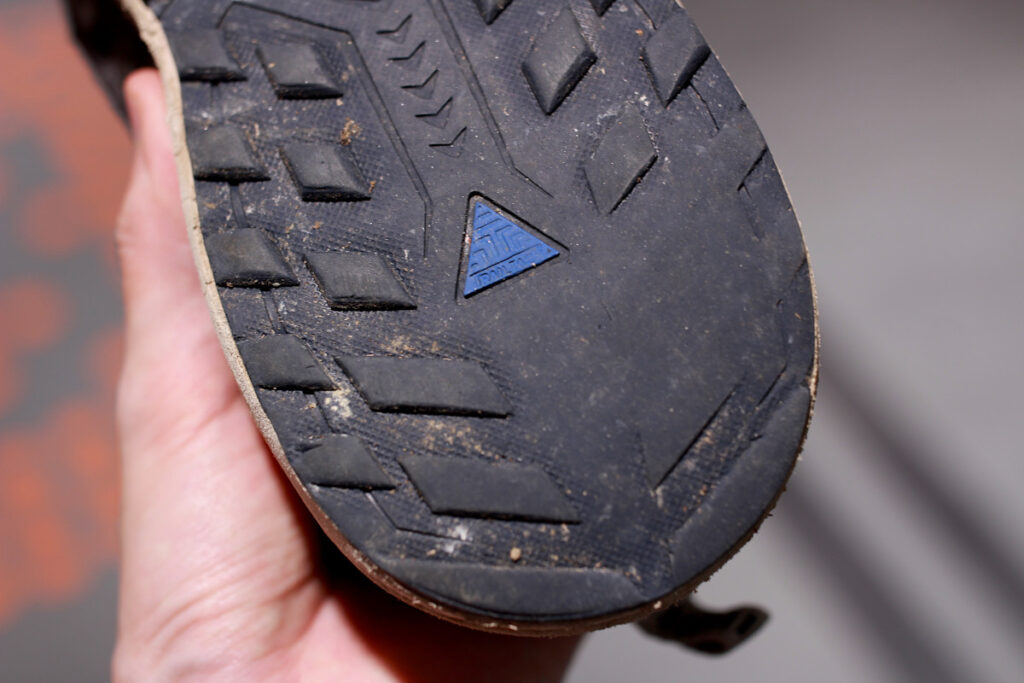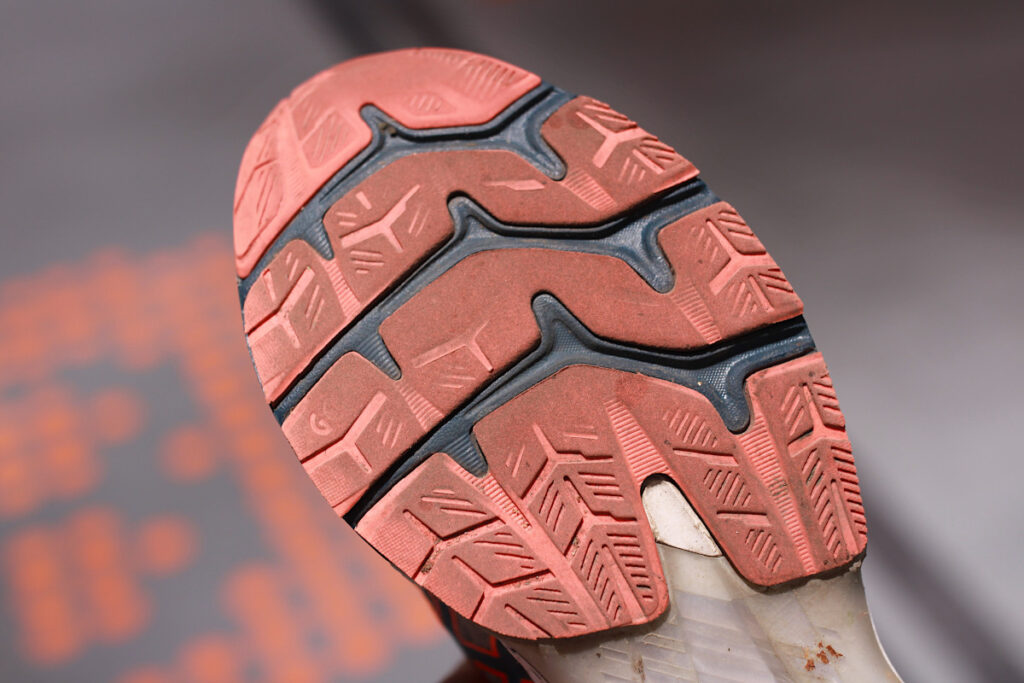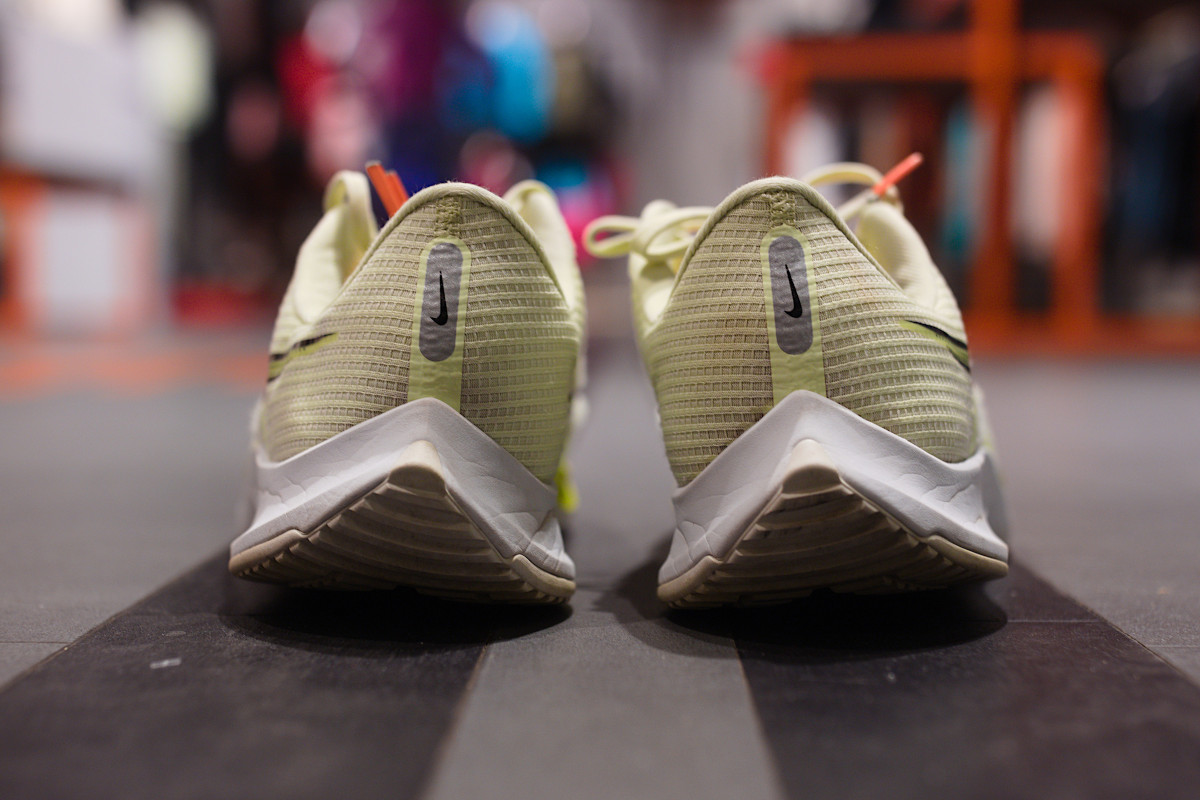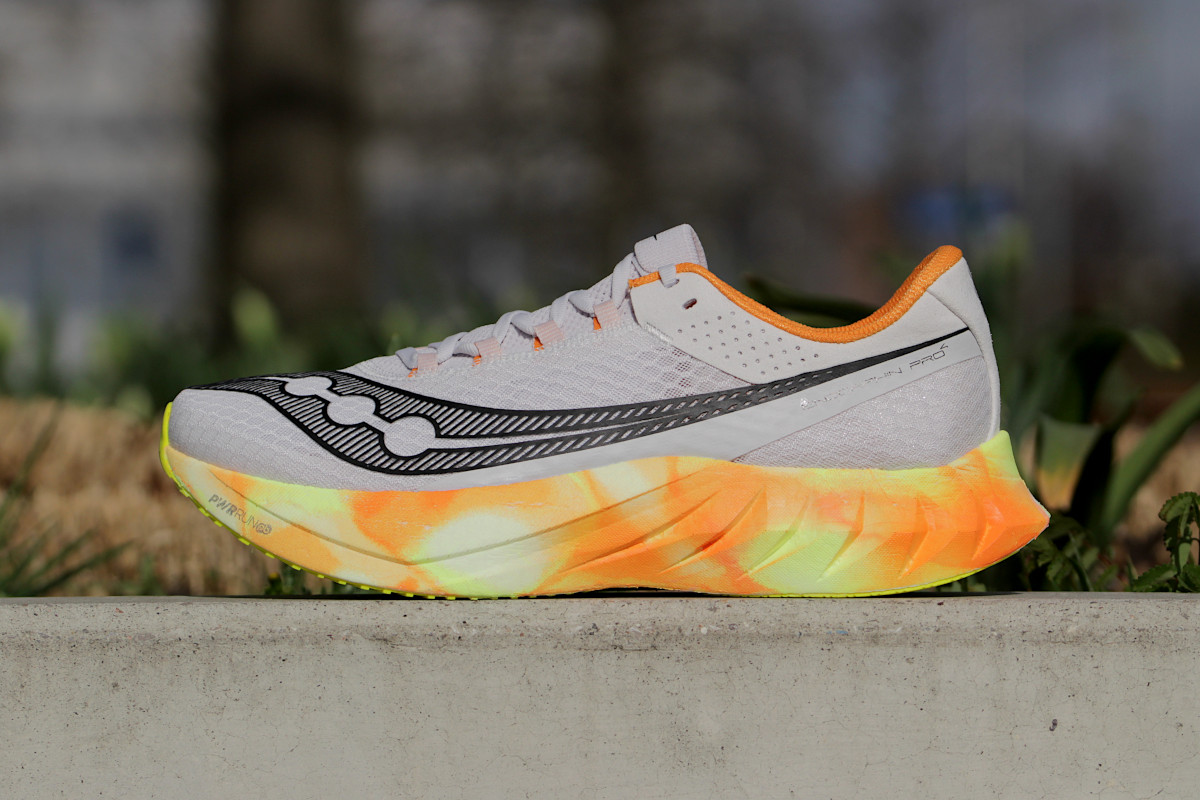Sometimes you can read that you can tell everything from worn-out running shoes. Foot type, running style, etc., etc. The truth is a little less enthusiastic because it is usually difficult to draw so many conclusions from them. It is certainly not possible to clearly determine the foot type in this way. Nevertheless, old, worn-out running shoes can sometimes provide some guidance when buying new ones. What kind?
What does it mean when the heel of a running shoe is facing outwards?
Let’s start with a correction: a worn heel on the outer side of the shoe is a completely natural thing. This is due to the mechanics of the foot, which naturally tilts outwards (supination) when preparing to make contact with the ground. This causes the foot to land on the outer edge of the heel first. Only in the next phase does the foot roll further, i.e. the center of gravity shifts to the rest of the foot, which often leads to (varying degrees of) pronation.
Abrasion of the sole on the outside of the heel is not a clear indicator of pronation. It can exist in people with a supinating or neutral foot as well as in those with a tendency to overpronate. Analyzing the wear on the sole under the heel alone is not enough to accurately determine the type of pronation. To determine the type of pronation, it is best to analyze the entire foot movement or consult an expert who can analyze your running style.
In rare cases, some people land with their foot on the inside of their heel. In this case, we say that their foot pronates from the moment it touches the ground. However, such cases are exceptional and affect less than 1% of the population. In this case, the shoe under the heel will wear out on the inside, and this is a sign that we are dealing with a supinating foot. However, these cases are rare and affect 1 out of 100 runners. The rest of the runners, i.e. the vast majority of them, regardless of foot type, tend to wear down the outer edge of the heel.

Overpronation or supination?
The second place where you can see how worn the shoe is is the outsole under the forefoot. Ideally, the outsole should be worn evenly across its entire width. However, this is not always the case. If the outsole is more worn on the inside, this may indicate a tendency to overpronate. On the other hand, wear on the outer side may suggest supination. In practice, however, these differences are so subtle that it is difficult to clearly determine the type of pronation of the foot on this basis.
There is also another problem with assessing the wear of the tread under the midfoot. The rubber used for the treads on training shoes is usually very durable. They wear out much more slowly than the cushioning foam in shoes. In practice, this means that the shoe often loses its cushioning properties long before we can tell anything from the wear on the sole.

Check if your running shoes are standing straight
It is also worth looking at worn-out shoes from behind. How they “stand” on a flat surface can tell us a lot about how the feet work when running. Just place them side by side on a level surface and look at them from behind. If the shoes appear to tilt inwards, this may indicate overpronation of the foot. After all, such deformations should not occur if the shoes are not subjected to constant stress in this direction. On the other hand, if the shoes maintain a straight posture, you probably have a neutral foot. However, if the shoes tilt outwards, it may suggest that the foot is supinated.
For example, the shoes of a person with overpronation (i.e. a valgus ankle) will clearly tilt inwards, both left and right. We can see this perfectly in the image below.

It is also worth paying attention to the type of shoes we are analyzing. In the case of neutral shoes, the interpretation is quite simple. A tilting inward means excessive pronation, a straight position indicates neutral feet, and a tilting outward suggests supination.
On the other hand, when analyzing shoes with stabilization, the effect of this stabilization must be taken into account. Stabilizing shoes have a harder, less flexible sole on the inside. This means that if the foot pronates excessively (i.e. “runs” inward), the shoe helps to correct this movement by slightly directing it outward. In this case, the inward tilt of the shoe may be hardly or not at all noticeable.
The trivial thing: size
Sometimes, worn-out running shoes can provide clues as to which right size to choose next. The size of cross-country shoes can differ significantly from your everyday footwear. If you remember your running shoe size, that’s great! If you are not sure, check the size of your previous pair before buying another one. This will give you an indication of what size you should look for your next pair of running shoes.
If you have not experienced any problems while running hundreds of kilometers in a particular model and size, you can assume that it is the right size. With this (mundane) knowledge, it is easier to make the right choice of size when buying another pair of shoes.
If you have had problems wearing shoes of a certain size, it is worth considering whether they are due to the wrong size. Many people do not realize how much of an impact the right fit has on the foot, both in terms of length and width. The most obvious example of the problem of incorrect size are the so-called black toenails, which are often the result of wearing shoes that are too tight or too short. When running, the toes hit the front of the shoe, which leads to painful bruises under the nails and, in the long term, even to them coming off.

The solution to this problem is often very simple. When choosing your next pair, just go for a larger size. This will provide more room for your toes and prevent injury. It is also worth remembering that in the case of cross-country shoes, it is recommended to leave about half a centimeter to one centimeter of space between the longest toe and the end of the shoe. This can significantly improve running comfort and prevent future injuries such as chafing, blisters or black toenails.




